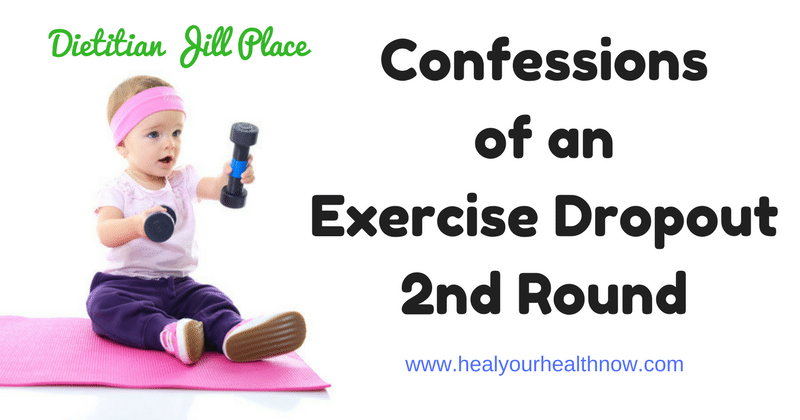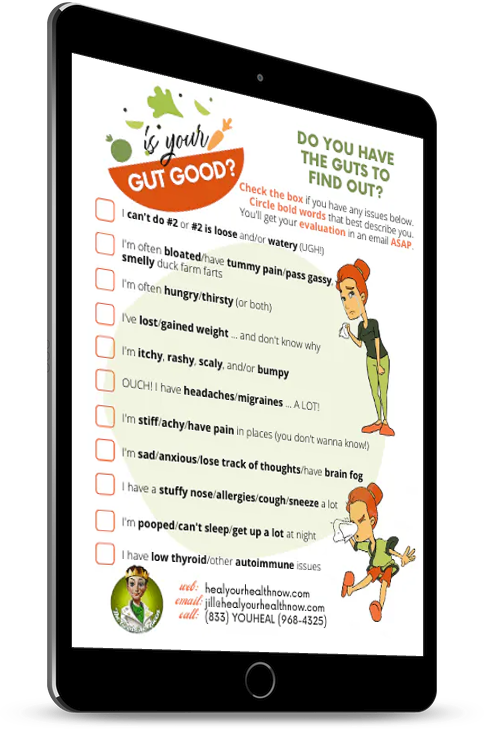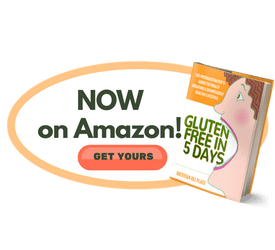
Flexing My Muscles …
OK … after taking a fearless personal exercise history, gathering AH-HA’s, and sitting with it awhile, it’s time to move forward. If you haven’t read the first part of this, go here now. It’s important that you do the first step first as our subconscious minds work in mysterious ways to come to some conclusion about our past histories.
So … once you really dig deep into your history, you may now have an inkling about why you’re resistant to exercise. This may be a lifelong resistance like mine. So let’s now go to …
STEP TWO: WHAT’S YOUR RESISTANCE?
Thinking back on my own exercise history, several things pop up for me. Number one is my early experiences, especially the images of me in that horrible gym suit and embarrassing size-16 dress. It seemed that all those ancient good feelings on my bike and skates were all but erased by those two images. And fueled that whole belief I have of not being physical.
So now it’s time to explore your exercise resistance. And unless you’re like an ex-boyfriend of mine who was an Olympics-eligible gymnast, a gymnastics coach, and used to swing on the chinning bar he put up for me when I was making dinner, you probably have some too. I was in the second-best shape of my life then … in my fifties. But the relationship ended and, with it, any desire to do anything with my body. Come to think of it … that’s probably why I sat down for 20 years … a combination of not feeling physical and losing my exercise lifeline.
Unfortunately, we’re wired to dwell on the negative and conveniently forget the positive. So now it’s time to stare your resistance in the face! One way is to do the following processes:
1. What are your earliest GOOD experiences with exercise? Close your eyes and picture them. If you can’t picture them, that’s OK. Even if you can picture them, expand your senses … explore what you see, what you hear, what you smell, what you touch, and possibly what you taste. Dwell on this for a while until you can feel it in your body.
2. Get up immediately and, choosing the most vivid of the good experiences you saw/felt in process one, begin to move in a way that mimics what you felt/saw. If it’s biking, you can sit in a chair or go to the floor and cycle your legs. Or, if your good experience was martial arts of some kind, get up and do some of the moves. If it was potsy (AKA hopscotch), jump and skip like you did when you were playing the game. Really FEEL that goodness in your body … I call this process “Acting Out” and have used it for many years with my acting students.
I’ve got to warn you, though. I used this process to elicit emotion in my acting students. So some emotion may come up for you. If it does, that’s OK. Even desired. Feeling the emotion may stimulate a healing. I do love mindfulness meditations to stimulate further healing and bring the unconscious into consciousness … there are many on free sites such as “Insight Timer” and “Buddhify”. I especially like the meditations about “Leaning into Discomfort” and “Body Healing”. So many experts agree that this type of process is integral in life-changing programs.
3. One vital idea to embrace is the concept that we exercise (or don’t exercise) … or eat (or don’t eat) because of a rising anxiety. We feel anxiety … we do a behavior that we’ve always done. Mine is planning exercise, then sitting down and doing anything I can distract myself from fulfilling this goal … like working on this computer or otherwise finding something else to do until I absolutely know that I can’t do any exercise because I have to be somewhere else at a certain time. WHOA … that was a revelation! I’ve always known that particular behavior existed, but haven’t named it and claimed it until now. GOOD FOR ME!
I want you to know that feeling the anxiety and “leaning into” it is the best and quickest way I know to change behavior. You’re tapping into that neural network and unconscious behaviors and transforming them on the spot!
STEP THREE: FIND SOMETHING TO DO THAT YOU LOVE!
Believe me … I’ve tried everything. I bought a bike … hate biking. Left it several houses ago. And the last time I skated I fell on my ass on the Strand in Venice, California. So … obviously … early good experiences weren’t going to work. And running … which was my go-to high for many years … was not an option because of my age. And my gymnastics coach was long gone.
But … WAIT! I LOVED Tai Chi, which was my alternative exercise when I wasn’t running or working out with that coach. And only left because the Sifu (master) cancelled my most convenient class. So I searched for a nearby class, and found this fabulous teacher who taught Qigong in my area. I’m giving a shout-out to Trace from heartmind-taichi.com. I describe this as unconstructed T’ai Chi because it uses many of the poses without the form. But … the best news … I actually looked forward to one of our sessions (I’m doing one class and one private a week), which means I’m on the right track.
So you’ve got to find something that you love first. As moving that way may be a catalyst to moving in other ways. And when you’re trying to find an exercise to start out with, it’s better to go with one you’ve done happily before. Because the body remembers … we just have to help it do so …
Leave Your Comments About Confessions of an Exercise Dropout 2nd Round Below
What do you plan on doing to combat your exercise resistance? Do any of the ways we’ve put forth resonate with you?


Wonderful….and the leaning in is a problem. I don’t want to feel I have discovered lately…a big aha! I thought I was all good with feelings…but I am not and far away from feeling alot of them. I use excersize not to feel….actually. Ok you are the best!!
Wow you said just what I do! I plan on doing all these specific workouts and have a huge Pinterest exercise board but I procrastinate and don’t do it, then run out of time. I need to fix that and just do it!